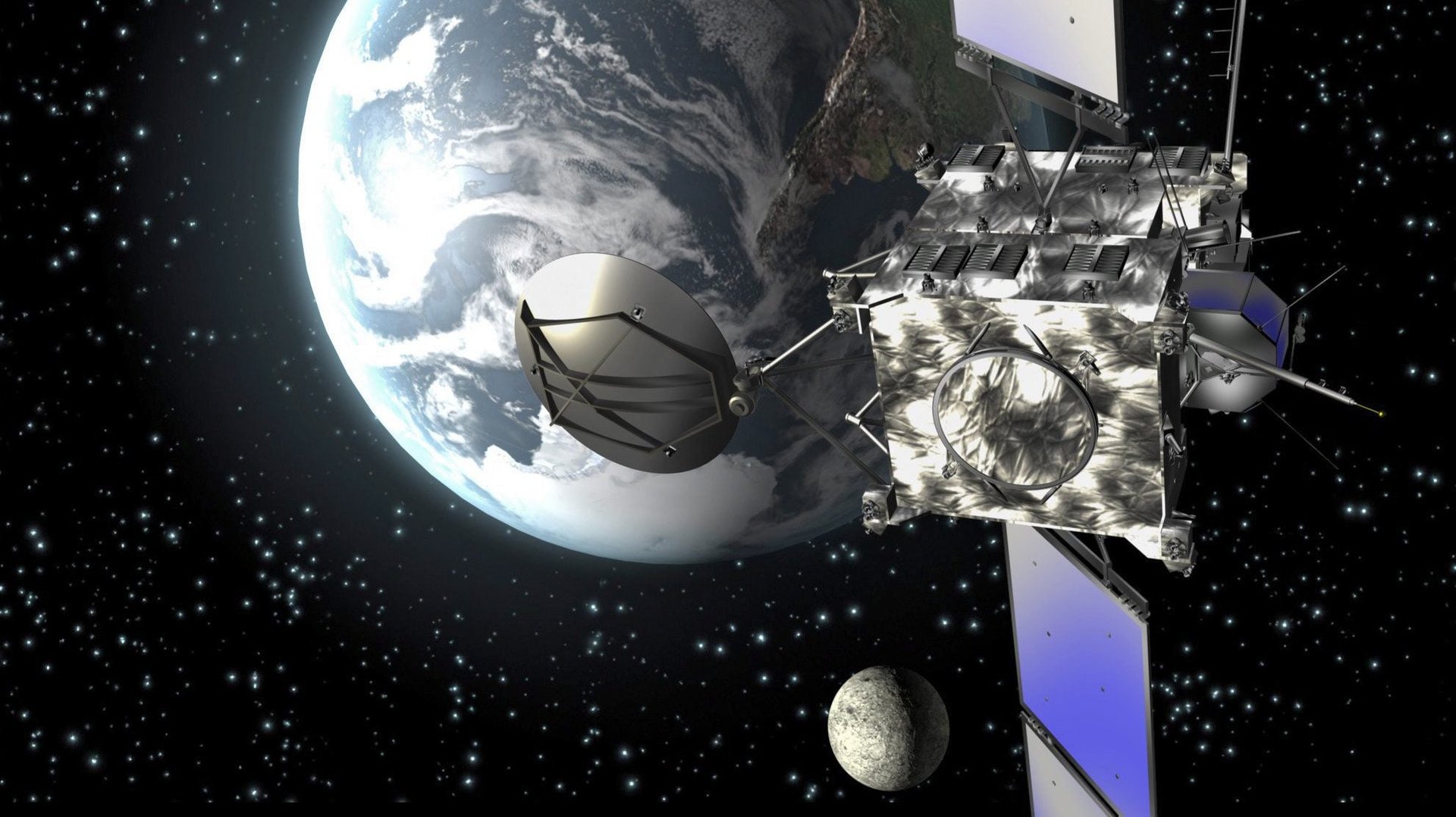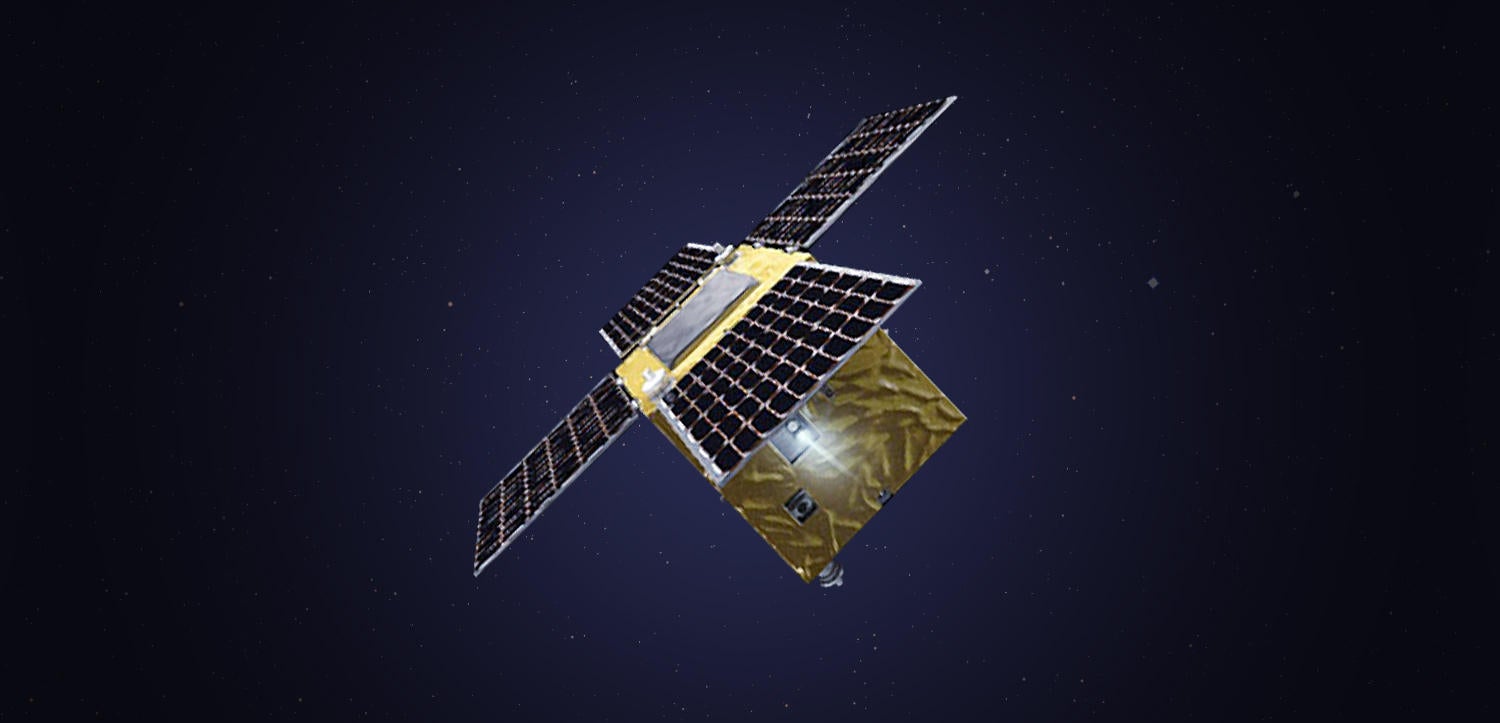How a failed Japanese space mission lucked into catching a comet
For the last two years, the highly publicized European Space Agency’s Rosetta mission has been tracking the journey of the comet “67P/Churyumov-Gerasimenko” as it speeds through our solar system at 84,000 mph (135,000 kmh). With the Rosetta probe orbiting around the comet, and the Philae lander clinging to its surface, the mission is trying to find out whether comets are harbingers of life, bringing water and organic material to the barren, rocky worlds scattered around our universe.


For the last two years, the highly publicized European Space Agency’s Rosetta mission has been tracking the journey of the comet “67P/Churyumov-Gerasimenko” as it speeds through our solar system at 84,000 mph (135,000 kmh). With the Rosetta probe orbiting around the comet, and the Philae lander clinging to its surface, the mission is trying to find out whether comets are harbingers of life, bringing water and organic material to the barren, rocky worlds scattered around our universe.
Bringing the mission to life (the probe launched in 2004, and reached the comet in 2014) cost more than €1 billion, took decades of development, and required substantial publicity efforts to gain popular support, including a futuristic and artfully shot promo featuring Aidan Gillen of Game of Thrones fame. But in September 2015, it was a tiny spacecraft the size of a microwave oven called Procyon, drifting over 167 million mi (270 million km) away from the comet, that became the unlikely hero for this ambitious mission.
Procyon (which stands for Proximate Object Close Flyby with Optical Navigation, and is also the name of one of the brightest stars in the sky) was designed in late 2013 by Tokyo University in cooperation with JAXA, the Japanese space agency. Its development took about a year and cost a few million dollars—a fraction of the time and money it took to get the Rosetta mission off the ground. And yet the spacecraft was in many ways revolutionary. The engineers had to work out how to make miniaturized versions of all the systems needed for communication, maneuvering and propulsion. It would be the first vessel of its size to go beyond the Earth’s orbit and into deep space. And most importantly, Procyon boasted a mini ion engine, an innovative, miniaturized propulsion system powerful enough to let the spacecraft’s mission team change its orbit, enabling it to make a close flyby of an asteroid. If all went as planned, Procyon would go down in history as the first spacecraft below 220 lbs (100 kg) to accomplish such a feat.
Procyon’s problems started twelve days after its 2014 launch. A software bug caused a malfunction in one of the valves regulating the pressure of xenon, an easily ionized gas commonly used as propellant in ion thrusters. Another bug caused one of the engine control units to freeze each time a string of commands bigger than 256 kb was transmitted from Earth. Then a valve started leaking. More and more issues started to crop up, raising doubts about the validity of the mission’s super-fast development and testing process. Despite the ground team’s efforts, the seemingly fatal blow came in mid-March 2015 when Procyon’s ion engine broke down.

Ion engines, no matter their size, have the same basic working principle: they generate thrust by propelling electrically charged gas particles. Those particles, called ions, are accelerated by an electrostatic field created by two electrodes known as grids, each with thousands of tiny holes exactly aligned with each other, and spaced close together, without touching. The greater the voltage difference between the grids, the faster the ions move, pushing the spacecraft forward. The downside is that the field is also a powerful magnet. So, if there is a tiny piece of metal nearby, it instantly gets pulled through one of the holes. And if it gets stuck, it can cause a short between the electrodes which usually kills the engine.
That’s what engineers said was the likely cause of Procyon’s failure. At a joint press conference in April 2015, Tokyo University and JAXA broke the news that a piece of metal had probably got stuck between the grids. They had tried rotating the spacecraft, to shake the metal piece out. They had tried to burn it with high voltage, and to heat and chill the grids, making them expand and contract in an effort to dislodge the piece of metal. But their efforts were for naught: the ion engine had failed and the ship was helplessly orbiting the Sun, unable to change course and therefore unable to either conduct its intended asteroid flyby or return home.
All was not lost. In addition to its main ion thruster, Procyon had eight still-working smaller ones, which could eject gas at high pressure in order to do simple rotational maneuvers. The small engines could make it possible for the ground team to aim the spacecraft in any desired direction to get at least some science out of its onboard telescope. So, Procyon was redirected to observe the Earth’s geocorona and the Sun, both of which had been observed countless times before.
Then, in September 2015, the “opportunity to do something really big presented itself,” says Nicolas Fougere, a cometary science researcher at the University of Michigan who worked with both Rosetta and Procyon teams. Procyon, it turned out, would be orbiting the sun at the same time that 67P/Churyumov-Gerasimenko was at its “perihelion,” the point in its orbit when it is closest to the sun. That would put the comet and the tiny spacecraft (at least in space terms) in the same neighborhood.
At the time, Rosetta was making its observations of 67P/Churyumov-Gerasimenko’s atmosphere by measuring things like cometary gas production. But there was a problem: the Rosetta spacecraft was too close to the comet to get a full picture of what its atmosphere looked like, and would get no help on this from the Philae lander, which was focused on drilling into the comet’s surface to search for organic compounds. Information about the comet’s atmosphere, including its size, was crucial to understanding how much water was on the comet itself. What the Rosetta team needed was a distant observation point, something that could measure the whole cometary atmosphere, instead of relying on inexact mathematical models to infer its real size from a tiny bit the probe could see.
Procyon came to the rescue: the team was able to aim its telescope at 67P/Churyumov-Gerasimenko, and the readouts they got proved invaluable to scientists, like Fougere, working with Rosetta’s team who used them to double check the results of their models.
Ultimately, Procyon showed what small spacecraft could offer the future of space exploration. It may have failed its mission to be the first of its size to accomplish an asteroid flyby, but by assisting the Rosetta mission, it became the first vessel of its size to gather data in deep space, an achievement detailed in a paper published by Yoshiharu Shinnaka, Fougere, and nine co-authors in The Astronomical Journal (paywall) on Jan. 24. Fougere expects miniature spacecraft to be used more frequently for deep space missions, most notably for the high-profile Project Starshot, an initiative backed by Russian billionaire Yuri Milner to try reach Alpha Centauri, our closest star system.
Given how much budgets for government-backed space exploration have been whittled down, “it’s very important for people to do lots of science with less expensive spacecraft,” Fougere says. “If something goes wrong, it’s much easier to justify the costs to taxpayers with missions closing at a few million dollars.” A shorter development time also means multiple missions could be done at the same time.
In May 2018, two communication satellites called MarCO, both the size of a shoebox, will launch alongside the NASA’s InSight lander mission to Mars. They will navigate to the Red Planet on their own and provide a backup communication link with Earth for a few critical minutes during the lander’s touchdown. Fougere believes low-cost spacecraft complementing flagship missions to be the future of space exploration: “we can send hundreds of such ships for a billion dollars, instead of just one.”